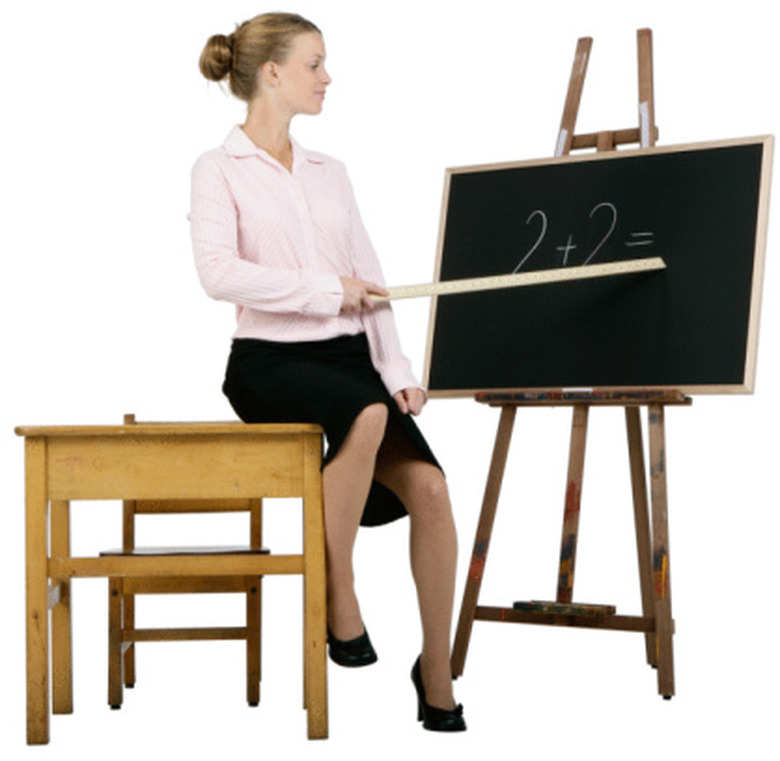How To Explain Regrouping In Addition & Subtraction
Addition and subtraction with regrouping is taught sequentially in many steps in most second grade math textbooks. Once students learn the basics of these math skills, they receive repeated practice with a wide variety of problems in future grades and on standardized tests. The process begins with the concept of regrouping numbers–trading numbers of one place value for another. After third grade, students should be able to solve most addition and subtraction with regrouping, yet many will make mistakes. When they do, teachers and parents have to help students remember the concept of regrouping.
Step 1
Correct a worksheet a student has completed for errors.
Step 2
Write the first addition problem that they have missed. Use a lined sheet of paper.
Step 3
Review the ones place. If student has gotten that part of the problem correct, praise him. If not, let him know the error he made. For example,a common error is forgetting to write a "1" above the digit in the tens place for the numbers they had added in the ones place.
Step 4
Show the correct way to regroup the number. For example, explain to student if the sum in the ones place is 10 or over, the tens need to be regrouped and written as a digit in the tens place. The rest of the number is placed as part of the answer in the ones place. Explain the process when adding the numbers in the tens, hundreds and thousands places, etc.
Step 5
Write a subtraction problem that the student missed. If there is a regrouping error, show the correct way to regroup the number. For example, if there is a zero in the ones place, explain that you are going to regroup the number by taking ten ones from the tens place. Cross out the digit in the tens place, subtract one from it and write that number on top of the digit in the tens place. Write the "1" in front of the zero in the ones place. Explain the same process when subtracting the numbers in the tens, hundreds, thousands and the remainder of digits in the problem. If the digit is a zero to the left of the number you are regrouping, show students that number would be a nine and then the number in the next place over would need to be one less.
TL;DR (Too Long; Didn't Read)
Use manipulatives if the student isn't understanding why regrouping is necessary.
Warning
Addition and subtraction with regrouping is a skill that takes several months to learn.
Cite This Article
MLA
Bamberg, Matthew. "How To Explain Regrouping In Addition & Subtraction" sciencing.com, https://www.sciencing.com/explain-regrouping-addition-subtraction-8254299/. 24 April 2017.
APA
Bamberg, Matthew. (2017, April 24). How To Explain Regrouping In Addition & Subtraction. sciencing.com. Retrieved from https://www.sciencing.com/explain-regrouping-addition-subtraction-8254299/
Chicago
Bamberg, Matthew. How To Explain Regrouping In Addition & Subtraction last modified August 30, 2022. https://www.sciencing.com/explain-regrouping-addition-subtraction-8254299/
